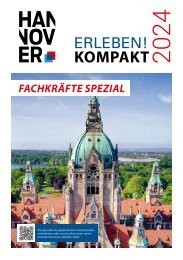Wirtschaftsregion Mainfranken
Erfolgreiche ePaper selbst erstellen
Machen Sie aus Ihren PDF Publikationen ein blätterbares Flipbook mit unserer einzigartigen Google optimierten e-Paper Software.
Along the River Main, its tributaries and on the western slopes<br />
of the Steigerwald, there are ideal conditions for growing white<br />
and red wine grapes. The continental climate, with around 1,750<br />
hours of sunshine, only around 600 millimetres of precipitation<br />
per square meter (both figures per year), cold winters and very<br />
warm summers, supports the winegrowers in their efforts to<br />
offer very distinctive, unmistakably Franconian wines. However,<br />
the typical Triassic soil formations of red sandstone, shell<br />
limestone and keuper also help clearly distinguish the wines’<br />
terroir from other regions’ products.<br />
Family structures are characteristic of Franconian winegrowing.<br />
The 6,200 hectares of vineyards are cultivated by about 3,000<br />
winegrowing families. The majority are small vineyards with less<br />
than half a hectare. The number of vineyards with more than<br />
ten hectares of cultivated land is steadily increasing. Around 30<br />
per cent of Franconia’s vineyards are cultivated by winegrowers<br />
who have joined together to form winegrowers’ cooperatives,<br />
press the grapes from their own vineyards centrally, produce<br />
wine from them and market it jointly under a single name.<br />
Information<br />
25 per cent of the wines are Silvaner, which is therefore<br />
the most common grape variety in Franconia. Franconia<br />
is internationally known and distinguished for this<br />
autochthonous grape variety, which has been at home<br />
here since 1659. Franconian Silvaner wine has won many<br />
competitions, proving that Franconia produces the best<br />
Silvaner wines in the world. Müller-Thurgau comes in<br />
second place, growing on around 22 per cent of the<br />
vineyard area. Bacchus, Riesling, Pinot Blanc and Pinot<br />
Gris are other varieties from the typically Franconian<br />
range. The popular Franconian red wines, especially Pinot<br />
Noir, Domina, Dornfelder and Regent, grow on around 18<br />
per cent of the area.<br />
With an annual production of approx. 450,000 hectolitres of<br />
wine, the Franconian wine region is one of the small regions<br />
in the European and global winegrowing environment. However,<br />
the people of Main Franconia are convinced that it is<br />
pre cisely these very strong family, regional roots and the clear,<br />
un mistakable profile of Franconian wine that offer more opportunities<br />
than risks for Franconian winegrowers in the context of<br />
increasing globalisation. After the opening up of the East, the<br />
Franconian wine country is now situated in the heart of Europe,<br />
accessible to everyone, tangible for everyone, to be experienced<br />
by everyone. The winegrowers have a face and a voice, and the<br />
typical bottles, the Bocksbeutel, have an unmistakable shape.<br />
The association Fränkischer Weinbauverband e. V. oversees the<br />
European-wide patent, which guarantees the use of this unique<br />
bottle shape almost exclusively for Franconian winemakers.<br />
The Bocks beutel is a clear differentiator that clearly defines<br />
the origin of the contents like no other bottle: Bocksbeutel is<br />
Franconia, and almost 30 per cent of all Franconian wines reach<br />
the consumer in Bocksbeutel, many of them boasting medals<br />
and prizes on the label.<br />
189

















